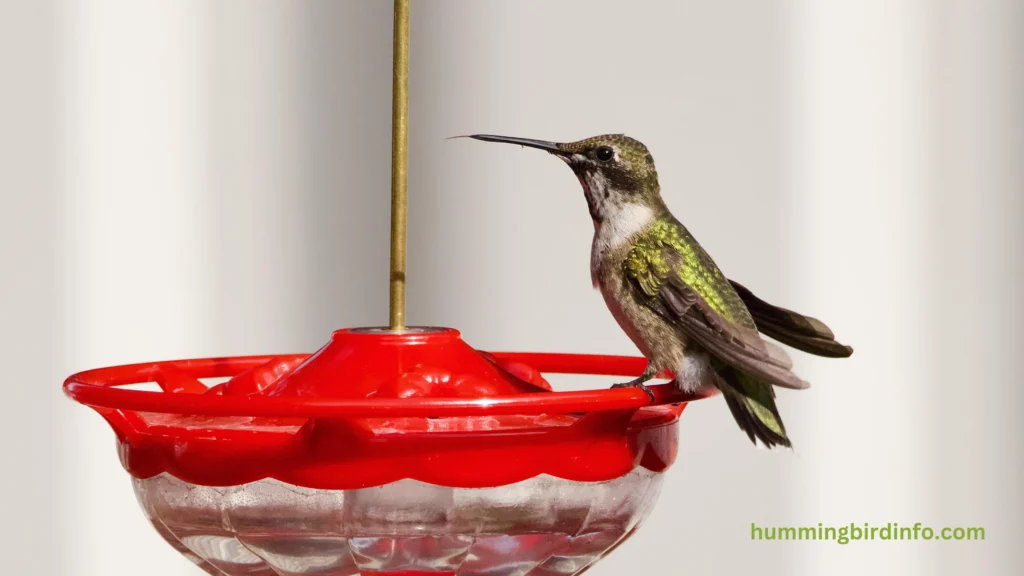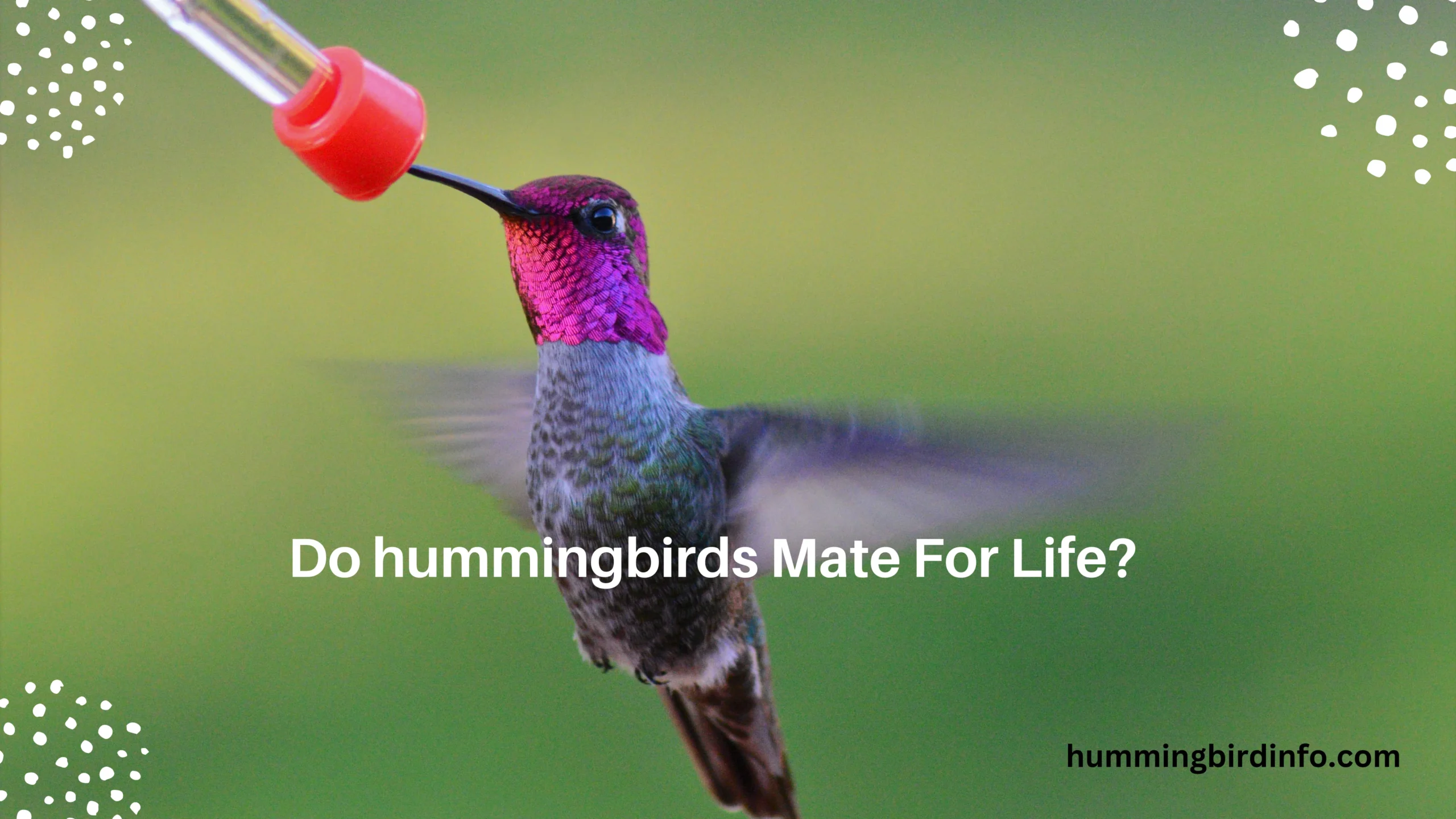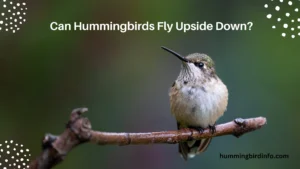Hummingbirds are nature’s tiny marvels, known for their dazzling colors, iridescent feathers, and seemingly boundless energy. These incredible birds zip through the air, their wings beating so fast they seem to defy the laws of motion.
But beyond their physical prowess, the question arises: do these miniature aviators commit to a lifelong partner, or do their relationships follow a more fleeting pattern? In the animal kingdom, some creatures, like swans and eagles, are famous for their monogamous nature, sticking with a single mate for life.
But do hummingbirds share this same level of commitment?
While the notion of lifelong monogamy might seem fitting for such spirited birds, hummingbirds actually have a very different approach to mating. Unlike the long-term partnerships we see in other species, their relationships are short-lived, based on an entirely different set of rules dictated by their unique lifestyle and survival strategies.
Their mating system is driven by adaptation, allowing them to thrive in environments where efficiency and quick decisions are key to survival.
In this blog post, we’ll explore whether hummingbirds really mate for life, dive into their courtship behavior, and discuss the evolutionary reasons behind their fleeting relationships.
By the end, you’ll have a deeper understanding of these remarkable creatures and why their approach to love and reproduction is as unique as they are.
Hummingbird Mating Behavior
Hummingbirds are solitary birds for most of the year, but when the breeding season arrives, they engage in elaborate courtship rituals. Male hummingbirds perform a series of impressive aerial displays to attract females.
These displays involve dives, swoops, and high-speed chases, with the male also flashing his iridescent throat feathers to show off his brilliance. Vocalizations are also part of this impressive act, which helps the male assert his dominance and desirability.
When it comes to mate selection, females are the ones in control. They carefully watch the males’ displays, choosing the one that performs best. However, mating itself is a brief affair, lasting only a few moments, with no long-term bond formed after the encounter. After mating, the male moves on, seeking to mate with other females.
No pair bonds are created, and both male and female hummingbirds quickly go their separate ways.
Interestingly, while female hummingbirds handle all of the parental duties, including nesting, incubating eggs, and raising the chicks, males contribute nothing to raising the young.
This polygamous mating behavior allows males to mate with as many females as possible, maximizing their reproductive success.
3. Monogamy in the Animal Kingdom
Monogamy is a mating system where two individuals form an exclusive bond with one another. While this concept is prevalent in many bird species, it takes on different forms. Social monogamy refers to pairs that raise offspring together, though they may still mate with others outside the bond.

Sexual monogamy means the pair exclusively mates with each other, while genetic monogamy ensures that the offspring are only from that pair.
In species like swans, eagles, and albatrosses, monogamy is a key survival strategy. These birds rely on the cooperative care of both parents to raise their young. In such cases, forming a lasting bond makes sense, as both parents work together to protect and feed their offspring.
For hummingbirds, however, the strategy is different. Male hummingbirds invest their time in finding as many mates as possible, rather than forming exclusive relationships.
Female hummingbirds, on the other hand, don’t need male assistance for raising their young, which means they can focus on efficiently building nests and ensuring their offspring’s survival.
4. Why Hummingbirds Don’t Mate for Life
Hummingbirds’ mating behavior is deeply tied to the ecological factors of their environment. Unlike many birds that depend on shared resources or cooperative parenting, hummingbirds have a different set of survival needs.
Their primary source of energy comes from nectar found in flowers, which is often abundant and spread across wide areas. This allows them to forage independently, without needing the help of a mate.
Additionally, male hummingbirds are driven by polygamy. They maximize their reproductive success by mating with as many females as possible during the breeding season, ensuring that their genes are passed on to multiple offspring.
This reproductive strategy is a result of the hummingbird’s high metabolism and fast-paced lifestyle, where the emphasis is on quick breeding rather than forming lasting bonds.
For female hummingbirds, there’s no need for male assistance. Raising young is an independent task, and females are highly efficient at nesting and incubating eggs. Their focus is on ensuring that their offspring are healthy and well-fed, not on maintaining a long-term relationship with a mate.
5. The Evolutionary Perspective
From an evolutionary standpoint, the mating behavior of hummingbirds makes perfect sense. These birds are incredibly small and have short lifespans, so their survival depends on how quickly they can reproduce.
Male hummingbirds increase their fitness by mating with multiple females, while females focus on raising their young independently.
Sexual selection also plays a crucial role in their courtship. The elaborate courtship displays performed by males are a way to attract females and demonstrate their fitness as a mate. The more impressive the display, the more likely the male is to secure a mate.
This competition ensures that only the fittest males pass on their genes.
The abundant availability of food also favors this polygamous behavior. With nectar and insects in abundance, there’s no need for males to form exclusive partnerships. Instead, they can spend their energy courting multiple females, thus increasing their chances of reproductive success.
6. Conclusion Section:
In conclusion, hummingbirds do not mate for life. Their mating system is tailored to maximize their reproductive success in a world where energy and survival are paramount.
Males engage in elaborate courtship displays, but the relationship itself is brief, with no lasting bonds formed. The females take on all responsibilities for raising the young, ensuring the next generation of these incredible birds.
This strategy makes sense within their ecological context, where independent survival and efficient reproduction are the keys to thriving. Understanding how hummingbirds mate reveals how diverse and adaptable the natural world is, with each species finding its own way to succeed.
The absence of long-term relationships doesn’t make their approach any less remarkable—it’s simply a testament to the unique path these birds take to ensure their survival and legacy.
Contents
FAQ’s
Do hummingbirds mate for life?
No, hummingbirds do not mate for life. They engage in brief mating encounters without forming long-term bonds.
What is the role of the male hummingbird in parenting?
Male hummingbirds do not contribute to parenting. Females handle all the tasks, including nest building and raising the chicks.
How do male hummingbirds attract females?
Male hummingbirds perform elaborate courtship displays, including aerial dives, swoops, and showcasing their iridescent throat feathers.
Do female hummingbirds mate with more than one male?
Female hummingbirds typically choose one male per breeding season, but they may mate with multiple males during that time.
Why don’t hummingbirds form long-term pair bonds?
Hummingbirds rely on their independence and efficient survival strategies, with males focusing on mating with multiple females and females managing parenting alone.
Are hummingbirds monogamous?
No, hummingbirds are not monogamous. Males are polygamous, mating with multiple females during the breeding season.
.








